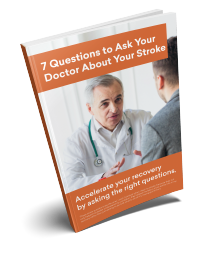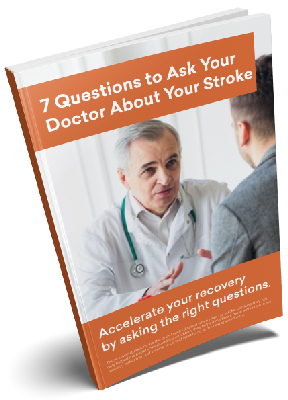Rewellio Virtual Reality Arm Therapy App.
Georg Teufl is an occupational therapist and the founder of Rewellio, the virtual reality software that assists patients to get more therapy time during recovery from a stroke or brain injury.
Rewellio is a smartphone and tablet app that uses virtual reality to improve hand function after a stroke or brain injury. Rewellio enhances traditional therapy approaches like mirror therapy and motor imagery. The hand therapy app is supported by software that reports the patient’s progress and biofeedback to awaken sensory pathways and visual stimulation to cement new functions.
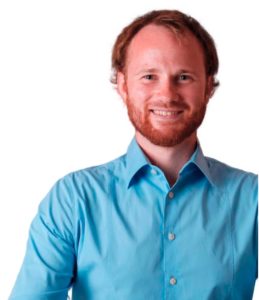
To learn more about Rewellio, follow the links below
Website:
Facebook:
YouTube:
Instagram:
Twitter:
LinkedIn:
To discover how to support your recovery after a stroke, go to RecoveryAfterStroke.com
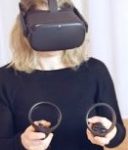
.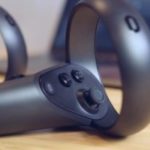
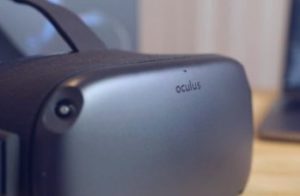
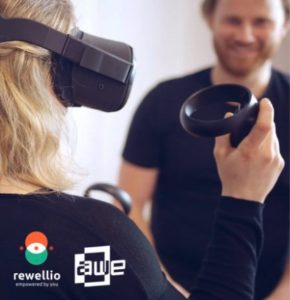
Transcript:
Highlights
4:26 Trying to reinvent the rehabilitation space
6:18 I decided I wanted to work with people
12:22 Something that can change lives
16:48 EMG activation
21:25 Learned nonuse
28:55 Motion map
30:38 Rewellio is a software company
39:39 It’s a learning process
44:31 It makes us happy too
52:27 Our Community
Bill 0:00
So, I used the Nintendo Wii to play virtual tennis in therapy. And that was great. I enjoyed it. And it got me physical, and it got me drained. But there was nothing to do with that data. There was no way to do anything with it other than it was an excellent, fun way to do rehabilitation and to try and play tennis with my left hand, where I’m usually a right-hander.
So that was interesting. I like how you’re bringing the therapist into this, but then you can also access the data, look into that data, see what patterns are emerging, and then use that to benefit people going forward. So that sounds like a well-rounded, actual, deep offering.
Intro 0:50
This is recovery after stroke with Bill Gasiamis, helping you go from where you are to where you’d rather be
Bill 0:59
Bill Gasiamis from recoveryafterstroke.com here. This is Episode 68. And my guests today are the founder and software developer of Rewellio.
Rewellio is an organization founded by George Teufl, an occupational therapist who was frustrated about the amount of rehabilitation time offered to his patients.
So he set about creating an app that would assist them in having more rehabilitation time, either while in rehabilitation or at home while taking advantage of the world of virtual reality using the Rewellio app.
Also, just before we get stuck into it, I wanted to let you know about something I’ve been working on that I finally completed.
Bill 1:51
It’s a free webinar that people can download directly from recoveryafterstroke.com/webinar.
Bill 1:59
Go to recoveryafterstroke.com/webinar to download a free webinar I created for people on the recovery journey. Everything I do at recoveryafterstroke.com is about creating a
Bill 2:16
a place where information can be shared with people who have either experienced a stroke or are caring for somebody who’s experienced a stroke so that they can go about making their recovery journey a much easier one than when I was making my recovery journey, which started seven years ago, there was a lot less information out there about how to get back on your feet after stroke. So, my job was to create a place where people could do that and recover better than I had. Hopefully, I can support people in doing that with this webinar. In the free webinar, you’ll learn how to take action on your recovery and how to build a vision.
Bill 3:00
of the future that will inspire you and what to do when facing hard decisions about your path forward. You’ll also learn the importance of creating a supportive team around you, what kind of people may be involved, and how stroke recovery coaching can help speed up your healing. So go to recovery after stroke.com slash webinar, and download the free webinar. And don’t just be a stroke survivor; become a stroke thriver. Andy Gstoll and Georg Teufl from Rewellio, welcome to the podcast.
Andy Gstoll 3:36
Thank you. It’s a pleasure being here.
Bill 3:38
Thanks so much, guys. I’m excited about this podcast. I’m always happy about my podcast, but I love it when I find something unique that helps my community overcome challenges after a stroke. Andy, could you tell me a little about yourself, what you do, and how you became involved in this organization?
Andy Gstoll 4:01
Absolutely. So, my name is Andy Gstoll. I’ve been in the startup world for over a decade and have focused on mixed reality. So, technologies like augmented reality and virtual reality are my expertise. And I act as an advisor for Rewellio. And I’ve been involved with the company for about a year and a half.
Trying to reinvent the rehabilitation space
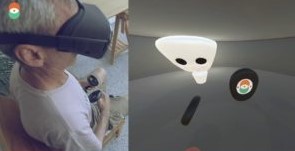
Andy 4:26
I coincidentally met George at an event where we started talking, and he shared his vision and idea about what he wanted to do for the stroke rehabilitation space. And I was very intrigued and got interested in this project.
So we spent a lot of time together, talking about his ideas and what he wanted to do regarding the construction of regarding, and so we found a way to work together, and now we’re a great team. And we’re on this mission of trying to reinvent the rehabilitation space.
Bill 5:09
I love the sound of it. Tell me, George, a little bit about your a little about yourself, Georgethis space?
George Teufl 5:18
I founded the company, and the driving force behind it is that I’m a physiotherapist working in stroke rehabilitation. I also have a background as a software developer. What I experienced during my work as a stroke patient in a rehab center is that you have a lot of time to do a lot of therapy. But after the patient returned, I went there. It turned out that they didn’t improve their other functions because they had too little therapy time. So that’s the reason.
George Teufl 5:56
Why is that thinking about what we can do to give stroke patients more therapy time? With my background as a software developer, I mainly looked at consumer electronics because they are affordable, so everyone can access these strategies.
Bill 6:14
So you’re a software developer and a physiotherapist.
I decided I wanted to work with people
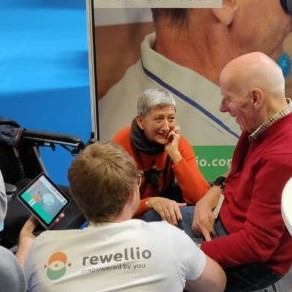
George Teufl 6:18
At first, I became a software developer, but then I decided I wanted to work with people and not just sit in the office and do programming. So I became a physiotherapist. And I think that’s the main advantage of the no profiles. So, the physical therapy world is entirely different from the software world. People speak other languages in different ways. And I think that’s a massive problem for many projects to get both in the same direction.
Bill 6:58
Wow, that is a unique thing. One of stroke survivors’ challenges, mainly when dealing with it, is understanding what it is. Each person is fantastic, and it is such a tough thEveryone trickyrtrickyeveryonectricky tracklists, am formational therapist s, formationalatever. And it’s the communication pathways that are complicated to sort of bridge.
Bill 7:36
Now, if you or someone you know has experienced a stroke and are recovering, you’ll know what a scary and confusing time it can be. You’re likely to have many.y questions going through your mind, to have many will it about what? Will recover? What things should I avoid if I make matters worse? Doctors will explain these things to you. But because you’ve had a question question to ask. If this is you, you may because you’ve never missokemis the things that can help speed up your recovery.
Bill 7:36
Suppose you’re finding yourself in that situation. Stop worrying. And head to recoveryafterstroke.com, where you can download a guide that will help you. It’s called Seven Questions to Ask Your Doctor about Your Stroke; they’ll help you better your conduct and our alsovrecoveryroke.com, and download the guide. It’s free.
Bill 8:49
They happen to be working in the field of the brain when they experience the stroke. And it just changes the game about how they can communicate, learn about what’s important to stroke survivors, and then give us applications for what they’ve learned in their studies. And now, how they use that in their stroke rehabilitation. So that’s another beautiful, unique, combining two completely different worlds, physiotherapy and software development.
Bill 9:19
And that inspired you to do this fantastic project, Rewellio, but at the same time, how did you get inspired to do that? Because women therapy, and they do what women think. If you decipher? Would you be involved in giving another aspect of patient support? What were their frustrations, and what was happening?
George Teufl 9:51
The primary motivation was a kind option. Because you work in a rehab center, you do all this therapy and see patients improving.
But in the long term, you don’t use their full potential for rehabilitation. So, I wanted to push the patient as far as possible.
Therefore, realize that the high-quality time for physiotherapists occup, national therapists speech,h therapists al, and therapists is limited because of cost.
George Teufl 10:25
So, that alone isn’t the solution for helping the patient get the most out of rehabilitation. So, it requires some additional therapy. And when you look out in the market, there are some solutions.
But most of them are very expensive. So the patient doesn’t use or can’t afford them at home.
If you look at all the robotics out stroke rehabilitation, they are too expensive. So, that’s not a fit for a patient to get the most out of repair; you need affordable rehabilitation approaches for home use. Because there you have the most significant gap in therapy time.
Bill 11:03
Andy, I can see that you probably bumped into this guy somewhere; he started telling you these things, and how could you not get excited about what he was saying?
And how could you not want to work? In this space, where you must find a way to collaborate. Were you so, what happened to you? How did you decide that you needed to? Or did you want to work in this space with George?
Andy Gstoll 11:27
As I said earlier, it developed slightly out of the blue because we just met at this event, purely by accident, just through a familiar friend.
And, as I said, I was very much involved in the startup space for over ten years or so, developing augmented reality software through a company before this, and very much focused on use cases where this technology can be used in the advertising space.
In other enterprise environments, in the gaming industry, in all sorts of different backgrounds, but not in the medical and healthcare space.
Something that can change lives
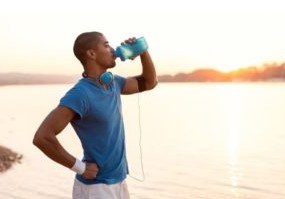
Andy Gstoll 12:22
So, when I listened to George and his cause and mission, it was a completely new subject matter for me, something I hadn’t been involved in, but I saw that the reason was excellent.
And it’s something the world needs; it’s not entertainment, fun, or a moment of joy.
But It’s something that can change lives, and something change how people live their daily lives, and that’s what interests me,
Andy Gstoll 13:06
At this point in my life, and it’s, it’s something that.
Andy Gstoll 13:09
I found Gesomethingque’s skill set extremely attractive, as he explained earlier, with a combination of understanding the physical therapy space. Also, the software development, having an overall good sense for technology, and being inventive and coming up with new concepts, I thought this was an excellent opportunity for me to get involved. And that’s why I couldn’t say enough.
Bill 13:43
Excellent. So we’re talking about Rewellio, and Rewellio is a virtual reality device, isn’t it that stroke survivors wear? Tell me a little about it because we haven’t spoken. And we’ve been going for 10 minutes or so.
George Teufl 14:04
The basic idea or another is that one of the biggest challenges of stroke limitation is getting back a functional use of the hand.
So if the patient can move a little bit, or even if it can’t move anything, very few therapy efforts work well.
You have minimal mirror therapy, movement, motor imagery observation, and minimal approaches because the patient has no feedback.
As soon as a patient can grab and release things, you have very effective therapy approaches like same therapy and force use therapy to push these motor activities.
George Teufl 14:47
But to get there, it isn’t easy. Most patients don’t get there because they don’t know what to do or there is nothing to do that truly works. So, the basic idea for Rewellioat patients without functional use of the hand is to experience the writing in the full range of motion in VR.
So, the basic idea is to move mirror therapy to VR. So you have a headset n, a healthy hand in VR, and a second hand controlled with EMG (inaudible). And that was the basic idea.
Bill 15to3
When I went through therapy, hand therapy after surgery, I woke up and couldn’t feel my left side. So, I need rehabilitation to walk to the west side. I was in the hospital waiting to get to therapy and being evaluated. And I didn’t have mirror therapy, waiting, n’t having any treatment. Yet.
It was two or three days before I went into rehab for the first time; I imagined myself using my arm and leg. So tell me, how does virtuaimaginedk?
Does it tap into that imagination imagined brain where it fires off neuronal structures as if I imagined the imagined brain over another path? Does it take another way to that result?
George Teufl 16:14
It is not (inaudible) if you think of motor imagery; you think of the movement, but you have no feedback on whether you feel the right way. Or if you’re concentrating on this in the right, you don’t know it’s the perfect approach. But in some sense, most patients have at least a minimum. Action, even if it’s not visible.
Bill 16:45
What was that? We see that most 16:48
EMG (Electromyography) activation, there was some muscle activation, even if you don’t see them. And so we are amplifying the signal, so the patient gets the feet they are sending down a sign, trying to activate the flex or the extender and seeing changing the password on display. So now you have the motor feedback loop sending a signal down and getting some activation.
Andy Gstoll 17:19
Just for clarification. So there are two things here: one is virtual reality, and the other one is EMG—Biofeedback, which Rewellio is also using uniquely.
So, ing to virtual reality only for a moment, the power here of virtual reality is, of course, to mimic some aspects of therapy as one aspect of it, which means that instead of stringing at a physical mirror that is set out in front of you on the table, and moving your healthy hand and looking at, the mirror image of your healthy hand, stimulating your brain accordingly to get that, movement back into the affected hand is, obviously an activity that gets boring very quickly.
Andy Gstoll 18:11
With virtual reality, this is something that we can do in a more fun way, more entertainingly.
Because we can have, we can create games with different things you can accomplish as you move your healthy hand. You can achieve scores, go through various levels, keep instant gratification, and have a little fun, and that’s an approach.
So, George used an excellent approach as a second bit; Here, we and EMandiofeedback with feedback aren’t there.
Different sensors can be used; one of them is the mile, which has been used before approaching Georgespects in some research. Here, for stroke and rehabilitation, that’s the aspect where we can see signs coming from the brain that will reach the underarm; even though the und is not, or the hands are not moving at all, we can still detect some though the signals that come, the muscles that are pushing the needle. Then, we can take those signals, amplify them, and visualize them through virtual reality.
Andy Gstoll 19:48
So that means that when you think of your hand, even though you don’t see the actual movement in your hand, you can see that movement, and virtual presential eyes perceive a movie, you can movievemenactionl reality g hand again stimulating film you with instant gratified comfortingseewhich a po, positive learning effect and gratified. Your activity again into the affected hand. There are two aspect aspects. Thereworkingositively involved; the biofeedback; the, that I was missing. When I was stage positively moving, I was driving it, guys, but he hasn’t told me anything in response. It wasn’t saying, yep, the move it. That’s the result of your movement.
George Teufl 20:43
That’s precisely what we’re doing. And we do a little bit more, we would track the flexor and extend some muscles, but you often see with stroke patients that they can flex a little bit but can’t extend again.
So we and some electric simulation systems are out there to try to activate the extensor. What we are doing is retraining the activation pattern of the hand.
So we chat, with the feeishretraininge the activation, to elect the flexor is activity extensor at activation feedback of the muscles very well; it’s an andy dominant tech now simultaneously learn n-use
George Teufl 21:25
But it’s too dominant that it isn’t going through simultaneously, and you have no feedback. You don’t learn how to activate this, and with Rewellio, you can learn to start both the flexor and extensive muscle in the right way and reopen the hand again with EMG biofeedback, but the feedback you restart. You can trigger SSomething with your activation pattern.
We prevent learned nonuse. And that’s one of the issues in stroke rehabilitation, especially hand rehabilitation. People need to repeat this activation rehabilitation to improve motor function issues with some gamification. They’re doing more repetitions; they’re better brand prepared for a session with a therapist so they can make more prosome21
Thato to t’s interesting; that word that yousomeonuse. So people hear about neuroplasticity, and they think, well, it’s a fantastic thing. We can create new pathways and use neural plasticity to benefit us. But people don’t realize that the negative side of neuroplasticity is that you can untrain the brain.
And because the brain is plastic, if there’s something that you’re not using, you can lose it. And that can go forever if you don’t practice that area. So I love that there’s an intervention there for learned nonuse, so has the program or the process, whatever you call it, been tested on patients at the moment?
George Teufl 23:05
We are auto some pilot customers, with centers in Austria, Germany, the UK, and the United States. Our essential approach is our evidence-based EMG biofeedback, often used in rehabilitation in other spaces and stroke rehabilitation. So, there is some evidence out there that we are based on.
And what we are also doing at Rewellio is collecting all this research data and putting them in a product. Because it’s another huge problem, you have many prototypes and research projects that show, Oh, that’s amazing that you can do. But most of that doesn’t reach any patient. The interest in clinical data for research, but not for the daily life of a stroke patient.
Bill 23:57
So the patients or the trial patients that you’re using it with are the people that have left rehabilitation space and are at home, and they’re using it at home,
Bill 24:07
by themselves as it’s intended.
George Teufl 24:09
If you want to call Both the user and the patient journey this way, as if you have suffered a stroke and you’ve come to rehab, you should get to know the system.
So if you like it and see that that is something you can benefit from, you should be able to do it at home. That’s the way, and you also can connect with your therapist, and your therapist can watch what and how you’re improving. But the main focus is to use Rewellio at home.
Bill 24:42
And has there been any feedback yet from the patients who are trialing the product to give you an idea of how they’re traveling or what they’ve noticed differently?
George Teufl 24:54
Most patients say they are surprised at how sensitive they can activate their other hand to get a different reaction. Because they usually do flex, that’s a pervasive activation pattern.
But most of the feedback, they’re surprised how sensitive they have to activate differently to get a different result. So, making them more sensitive is one of the most beneficial; we’ve seen some patients without any visible movements, and they can now define from this motor feedback loop.
George Teufl 25:33
Now they can move a little bit. But it’s always a long process, like stroke rehabilitation overseas. And with chronic stroke patients, we see them learn to reduce their muscle tension. So, if they have very moving hands, use Rewellio to learn to relax the flexor to comfort them. And so the hand gets softer now, which is also a massive step for them.
Bill 26:02
So you’re saying that the hand, which seems for many people not to move, gets stuck, closes, and gets clenched; you’re saying that some patients now notice that they can feel less clenched and a little bit more open.
Georgmuch21
Yes, if they can passively open the hand, if the writing is closed, the structures are so tight that extending the knot is impossible. But with some patience, you can passively open the hand. And with Rewellio, you learn to relax the muscles, so the writing gets softer. So, you’re coming quicker to the state where the paper is more delicate now.
Bill 26:52
So we’ve spoken a lot about the hand so far; in what other areas can this technology assist people recovering from stroke?
George Teufl 27:03
The main focus is to look at technology and see how we can use this technology in a therapeutic, meaningful way. So, with the EMG biofeedback, we focus on the hand; with VR, we mainly focus on the arm.
So, with the controller, you can track the range of motion, you can adapt the exercise to the patient to motivate him, and we’re also looking into visual field impairments. Neglect, because in VR, you can track all the events to which you and the patient are responding or not.
George Teufl 27:37
You can adjust the situation, especially for the patient. And with a research cooperation, wanting to look into the cognitive side. And the big picture of Rewellio is to get a better overview of the patient. Because usually, you have the assessments and rehab center.
And then the therapist says, okay, maybe there’s a problem with the vision, maybe there’s a problem with the cognition, you have some assessment at specific tokaypoints. And what we’re doing is we’re collecting data in real-time, and see how we can look into this data to track every day and see how we can personalize the therapy.
Bill 28:22
Is there some way that I can, if I was using your program or your device, can I track back and look and see how far I’ve come? One of the things that I think is important for stroke survivors is that they have the ability.
And I often tell people to get their loved ones to get a video of them taking their first steps taking actions in the month. Can we track how we’re coming along? And how far we’ve come? Can we show that to patients?
Motion map
That’s a core element of what we’re doing. Right now, we’re building up our dashboard. – We track all the data about your exercise time and call it a motion map. So, in VR, we’re generating a map of your range of motion, where you can see how you increase this range of motion over time.
Bill 29:14
There’s a video diary, I believe, is also a critical component that we offer within the app. So it’s exactly what you just said: We give the patient the ability to record at a particular time and then watch it later. So they get a pretty good idea of the progress.
George Teufl 29:32
That’s a side project we’re doing because it’s what many therapists do: recording a video on the patient’s smartphone. We set up a video diary, where you can compare specific tasks where you take a video or in the timeline, for example, walking. You can record today and compare it with a video recorded six months ago or a year ago. And see side by side. Because for a patient, it takes a lot of time.
George Teufl 30:04
Most of the patients improve step by step. And seeing the minor improvements is very important for the motivation. And that’s the part where we want to support a patient, show them how has improved with therapy time, how has improved the range of motion with the speed of movement. To trim all these parameters, say you’re making progress; it’s going correctly. Keep going.
Andy Gstoll 30:34
So Bill, to clarify,
Rewellio is a software company
Andy Gstoll 30:38
Rewellio is a software company. So, the devices we use are in the market that anyone can pick up from Best Buy in the United States. In electronics stores, you can order on Amazon. So, we look for devices that are affordable, mobile, and accessible for anyone out there.
Andy Gstoll 31:07
So that’s with children on iPads on Android tablets, which most of us have at home anyway. And then we look into mobile virtual reality heads with each are now literally this year only beginning to that’s with child and practical in many ways.
Andy Gstoll 31:30
And then, on our website, we direct patients or therapists to these various hardware products, where they can buy them and order them on Amazon and whatnot. Still, we’re a software company, and one element of developing software is the Rewellio app. I mean, that’s what it is; that’s what you download onto your iPad on your tablet, to begin with.
Andy Gstoll 31:58
That’s where you offer all these exercises for the other modules George mentioned: the hand, the arm, speech, vision, cognition, and other areas we address with the other activities. You do different exercises, then you will always need the iPad, or you will always need the Android tablet; that’s always the basis, to begin with.
Andy Gstoll 32:25
Then we have these accessories, which you may or may not use for specific extended exercises, and that’s whether the VR headset comes in, or that’s where the EMG, biofeedback armband comes in, or perhaps other devices, accessory devices that we may use in the future.
Andy Gstoll 32:44
But we’re a software company, and we collect, through these robust sensors that we have, within these devices, we can collect a lot of data, as George mentioned, obviously, under stringent privacy policies, and making sure that that’s very well protected, we collect all this data, and that’s how we understand the condition of the patient.
Andy Gstoll 33:14
We understand, for example, as George mentioned, the range of motion; we know, perhaps, on the cognitive side of things, what tasks they can accomplish or fulfill and what maybe is potentially limited in terms of the vision when using the VR headset, and looking at particular objects in the virtual world that she will he can or cannot see.
Andy Gstoll 33:39
Collecting all of this data, we’re trying to establish a picture of the patient and understand the condition, and then, based on this, we call it the patient engine. Based on this, we recommend the appropriate right exercises for that patient.
Andy Gstoll 34:02
Because every patient has a problem in one area, others have multiple locations. We try to understand this profile and then offer the experience of this particular person, and then aha, has a specific person at the moment, what time instead multiple the therapy process, as the person progresses, so that’s the idea. That’s the overall picture of what we’re trying to do.
Bill 34:04
Do you expect it to be that tailored? Even if it goes worldwide and viral, many people will be coming on board that can’t. Evenness yourselves or somebody else. How does somebody on the unmanned side get a specifically tailored program to the requirements?
George Teufl 35:15
We always recommend using Rewellio in a one-to-one setting with a therapist. So, we don’t want to replace it, and it’s impossible to replace the therapy with the one-to-one locations. That’s the high-quality time.
This will generate additional therapy time for the patient to increase the therapy time. And that’s the key to the outcome of rehabilitation. So it always needs both sides. And both sides can do different things in the best way.
George Teufl 35:49
If you look at the technical side, with consumer electronics with the gamification, what we are doing is a great way to do more repetition to get better preparation. So, the representation of the handle of the example is better prepared for a session with the therapist and the one-to-one settings.
George Teufl 36:11
The therapist in the one-to-one setting can start with a better situation for the patient to improve and set up all this preparation in a functional way in the whole picture. If you improve, you need to do your movements.
But you have the proper shoulder alignment to improve the run. You must work on many things with the therapist and bring both together.
George Teufl 36:40
Improves the best outcome for the patient. That’s what we’re looking for.
Bill 36:50
Yeah, I improved the trunk of that. So, I used the Nintendo Wii to play virtual tennis in therapy. And that was great. I enjoyed it. And it got me physical, and it got me drained.
But there was nothing to do with that data; there was no way to do anything with it other than it was a good way, an excellent fun way to do rehabilitation and to try and play tennis with my left hand where I’m usually a right-hander. So that was interesting. I like how you’re bringing the therapist into this.
Bill 37:25
But then you can also access the data and look into that data, say what patterns are emerging, and then use that to benefit people going forward.
So that sounds like a well-rounded, deep offering of support, and then ongoing support and service to other people who are coming down the line and needing stroke rehabilitation.
So, how have you found the therapists and their acceptance of this new way of doing work rehabilitation? Has there been some concerns about what you’re proposing?
George Teufl 38:08
It needs a lot of explanation of what we’re doing to show them how to pitch to can benefit.
And as I said before, thinking of stroke rehabilitation, long-term rehabilitation.
So, most of the therapists in the neurological field are looking for additional therapies for the patient because they know they need more therapy time to get the most out of the rehabilitation.
George Teufl 38:33
And as a therapist, you can’t deliver the therapy they need. So most of them are very open-minded, especially the younger ones, very interested in technology and how to bring new approaches into the daily therapy business.
Bill 38:50
That’s great. The new ones, those new young ones, are always the ones we want to look to, take on new technology, and be the early adopters. Because they are very keen, they’re very excited.
And they still hope to save the planet, people, and everything. So we want to get them right when they’re excited.
George Teufl 39:18
And for most therapists, seeing their patients improve is the best thing they can see.
Bill 39:24
It would be gratifying.
George Teufl 39:27
That’s why we’re doing the job.
Bill 39:29
Yeah. Are there any limitations to the software at the moment, things that you’re working on that you hope to have that are not available now?
It’s a learning process – Rewellio
George Teufl 39:39
We are very early; we have an EMG biofeedback system. We have our VR systems working on the Oculus quest to release it very early, So that should be available VR systems are9:67
We have some research corporations forverynaliza of the therapy to have with the universities and look into the data we’re energy and see how we can learn can answer some questions of the researchers and how we can use the information to adapt the therapy situation to patients or to get them better therapy for the patient.
It’s a learning process for the following years. We are always learning.
Bill 40:26
Sounds like a fantastic thesis.
George Teufl 40:30
It’s imposing. Yeah.
Bill 40:33
How do you plan on rolling it out? If you’re five years down the track, you’ve gathered some data, had some trials running, and had some therapists online?
What does the process look like? When do you start to begin to roll it out? Recruiting more occupational therapists in more countries seems like a logistical challenge.
George Teufl 40:56
We’re focusing on the online side. So we try to reach as many therapists and patients over social media websites to share information, what we’re doing, how we’re doing, who can benefit, and what limitations of Rewellio so that it’s clear what we’re doing and can’t do.
George Teufl 41:18
The basic idea is that it is simply working out of the box. So, if you have your Oculus Quest or HTC tablet, you download the app, and tutorial videos guide you through the exercises. What do you do? What’s the focus of this exercise?
George Teufl 41:35
And it should work very simple. To experience stroke therapy, these approaches must work for the users in a very, very simple way. Otherwise, it’s for research and not for daily life.
Bill 41:50
Yeah, the focus on it has to be for daily life. And then the research also is an integral part of it. But, must theory looking for any solution possible initially, I wanted to ensure I got back just that.
And I know some people are still doing that 2 3 4 5 10 years after stroke; anything that tinimustytheorysed around the patient is much appreciated, needed, and wanted. What does it cost to download initially?
Georfocused, it’s free, a trial version, and I will switch to a paid version. It will be a monthly fee of about euros in Europe. So, I don’t know what it is Adownloadralian later this year Au, Australian dollars,
Bill 42:40
One mile Australian doll later this year is not worth much compared to the euro. But never mind, we’ll work it out.
George Teufl 42:51
However, the year dollars are based on a monthly fee for the software and the hardware you buy independently.
But as Andy mentioned before, it’s consumer electronics. So, other parts of the family can use our devices.
George Teufl 43:07
So the software is in the price range will be.
Bill 43:11
And it’s an ongoing fee. But it’s not something that people need to commit to forever.
They commit to it for as long as they want, and when they find the results they need, then they’re done with that.
Andy Gstoll 43:24
Yes, exactly.
George Teufl 43:25
Yeah. They can cancel anytime; it’s a monthly fee. And for stroke patients, you need a break if you reach some level.
So that’s where you can cancel it, and after some months, you decide, okay, now I’m full of energy, again, I want to reach new goals. You can reactivate your account and start the therapy again,
And43:52
Just a side note for me here: working in the startup space for a long time, one of the objectives is to buy your customers to be with you and subscribe to whatever service you provide for as long as possible because that’s how you make money.
Andy Gstoll 44:10
Okay, that’s how you build a business, but in this case, of course, we need to sustain our business, and we want to. Patients can use Rewellio as long as they want and as long as they can.
It makes us happy, too.
Andy Gstoll 44:31
On the other hand, once they sing Rewellio, it makes us happy, too, because we know we could improve their lives and even solve some of their problems.
So it’s a bit of a two-edged sword there.
Bill 44:48
You guys, you’re not going to be short of patients, unfortunately.
The statistics show one in six people will have a stroke in their lifetime, and 60% of those will get back to work, and 40% will sit at home, trying to get back to some everyday life. And that’s a vast number of people.
Bill 45:08
Unfortunately, most strokes are caused by lifestyle factors. According to the World Stroke Organization, 80% of strokes are preventable; that’s wild.
So we’ve done an excellent job of getting ourselves unwell now to rely on people like you to develop solutions to improve us.
Bill 45:28
If you think 30 euros, 50 Australian dollars, or 40 American dollars is a lot of monthly money to keep you well or get you better.
That’s nothing about how much it’s cost me to be sick from a stroke. In the last seven years, it’s cost me more than half a million Australian dollars; easy, that’s just been conservative.
Bill 45:51
And that is not in money that I’ve had to spend. That is in cash that I haven’t made; I haven’t been able to earn or do my business daily like I used to.
So, I encourage people to make money from stroke survivors in a beautiful, supportive way that offers excellent value.
Bill 46:15
There’s nothing wrong with making money in that space. And there’s nothing wrong with expecting people to pay $30 a month, or 50 euros a month, to allow you to continue making the software better and better and better.
Because that’s in the end, we want the most fantastic version of this. Hopefully, version one offers excellent value, for version 10 is ten times or 100 times better than version one.
Bill 46:42
And that’s what our community has not had the opportunity to do. I went to rehab in a month. I was discharged from rehab, and then I went home.
And I was doing outpatient rehabilitation three days a week. And I had to travel to that.
Bill 47:02
By the time I got there, I had done my one-hour rehab. And by the time I got home, four hours of my day were gone three days a week.
So, even if I wanted to get back to work, there were three days a week that I definitely couldn’t because I was committed to my rehabilitation, and I needed to get better.
Bill 47:18
So anything that can be done inside the home is also going to benefit people because it’s going to decrease their time.
This means it’s going to decrease the cost of travel, which means it’s going to reduce their fatigue and make it a lot easier.
And that’s part of what recovery after a stroke is doing.
Bill 47:36
I want to put together coaching and training programs and courses on wellness for brain wellness that people don’t have to go out to do because it was difficult for me to do.
George Teufl 47:50
But one essential message I want to add here is that Rewellio aims to add more therapy time. So, to get a faster, better rehabilitation.
That’s very important for me; as a therapist, we don’t want to replace your free time visit with a therapist; we want to add more therapy time.
So, from the mindset that it’s essential that our philosophy is to increase the therapy time.
Bill 48:18
Yeah, I love that. That’s precisely what I’m saying. I could increase my therapy time after its sessions because AU sessions are all paid for by the government, and we have a unique medical system.
So when I get home, after my three months of outpatient rehab, I don’t have any more therapy time unless I have money to pay for it upfront. And it costs way more than $30 a month for me to see each one of those people for an hour.
Bill 48:44
So, to do that at home increases my therapy time after therapy has ceased or after I’ve no longer qualified for additional treatment. And I know that now, in America, some people even need treatment, and now get in front of people because people need a system. The Medicare system is minimal.
Andy Gstoll 49:07
Maybe add one more point to this because you mentioned that you were viciously laying the Wii for some of the exercises you did. Of course, there are some clinics out there where you come in. They have various devices set up where the patient can sit and interact, maybe with a Wii like this or maybe with some other virtual reality systems that have been around in the past that were connected to a stationary PC that you had to wire up with cables that are that were very expensive.
Andy Gstoll 49:44
I want to point out the mobility aspect that you also explained, with your commute, going back and forth, taking a lot of time, and being very time intensive.
Andy Gstoll
The beauty here is that 2019, earlier this year, was when the first virtual reality headsets came out that were utterly untethered and completely mobile with controllers and systems. They were enabling the kinds of exercises they wanted to do.
So this is a significant moment in time. We’re doing things now that were impossible only y,eenablingndy 50:33
That’s also why we’re so excited about this because it solves this significant issue of being dependent almost on your clinic on the fact that you have to drive there. Perhaps you overhyped a loved one to sit with you in the car and take up their time.
And, to some extent, these mobile devices, whether iPad or virtual. Reality headsets solve this problem in many ways. And, as George says, it’s an excellent opportunity to add more te.
Bill 51: Virtual RealityI appreciate that so many people do this kind of work for people like me.
I find it fascinating that I don’t even know you because guys wake up in the morning, and so many people are like me.
It’s just absolutely fascinating.
And I love you for it. And I’m so pleased that you’re doing it. And it’s one of the things that I’m grateful for; I do gratitude journals occasionally.
Bill 51:37
I don’t physically write anything down. But I have this little gratitude practice.
I’m grateful for all the neuroscientists and doctors who wake up and do thousands of hours of study to open people’s heads, take things out, put things in, and fix just wholly mind and mind-blowing.
Bill 51:57
I completely love that you guys are doing this; I thank you so much. I appreciate your time today.
Thank you for doing what you are doing. I genuinely feel like if I’m going to, if somebody is going to have a stroke.
It’s the best time in the world ever to have a stroke If that’s even something possible to say.
So where can people listen and watch? Find o, ut mosomethingour products. And what do you do?
Our Rewellio Community
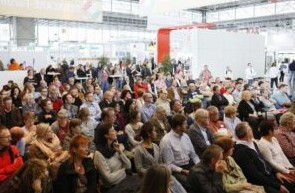
Andy Gstoll 52:27
Sure, maybe I’ll take that one. Yeah, you can go to our website, rewellio.com, which can easily be found.
But we also want to encourage you to become part of our community because we’re doing a lot of work on social media.
You can find us on Facebook, Twi, Twitter, Instagram, and YouTube; we have a lot of things up there. Just Google Rewellio, and you’ll find us there.
We also have a newsletter, which we send out every month, to keep our followers updated on some of the Twitter we do. We attend a lot of events.
Andy Gstoll 53:05
A significant event here in Germany called REHACARE is in Dusseldorf on September 18. So we’ll be there and will be exhibiting. We have a booth there and so forth.
So, subscribing to our newsletter and following us on social media is the best way to get in touch and follow what we’re doing. And like George, as George said, we’re still in a relatively early stage.
Andy Gstoll 53:32
So many things are still in the pipeline, in development, and coming.
So, we want to ensure we have a way to connect with your listeners and your audience out there. We are going forward. So make sure to subscribe to the channels.
Bill 53:49
I’ll have all the links to the social media platforms and all of that in the notes. So we’ll get that at the end of the episode. George, any last words?
George Teufl 54:02
We tried to build value for therapists and patients. Therefore, we also need the community’s feedback. And as Andy said, We also invite everyone to give us feedback.
Please tell us what you want to see in Rewellio and get involved so we can make the best experience for the patient and the therapist for the rehabilitation.
Bill 54:27
Excellent. Guys, thanks so much for being on the Recovery after Stroke podcast. Your product and your work are perfect for my podcast.
And that’s why I was so excited to connect with you both and to share your work; just in case anyone’s listening and they’re wondering, I’ve got nothing to do with the guys.
I don’t have any interest in the organization. I’m just somebody who loves to share fantastic work; this is precisely what I’m doing. So, thanks again.
Andy Gstoll 54:58
Thank you Bill
George Teufl 54:59
Thank you.
Intro 55:00
Discover how to support your recovery after a stroke. Go to recoveryafterstro; this.



